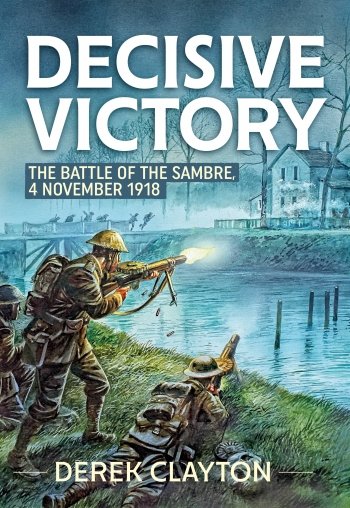-
Załączniki bezpieczeństwa
Załczniki do produktuZałączniki dotyczące bezpieczeństwa produktu zawierają informacje o opakowaniu produktu i mogą dostarczać kluczowych informacji dotyczących bezpieczeństwa konkretnego produktu
-
Informacje o producencie
Informacje o producencieInformacje dotyczące produktu obejmują adres i powiązane dane producenta produktu.HELION
-
Osoba odpowiedzialna w UE
Osoba odpowiedzialna w UEPodmiot gospodarczy z siedzibą w UE zapewniający zgodność produktu z wymaganymi przepisami.
The Battle of the Sambre, 4 November 1918, was a decisive British victory. The battle has, however, been largely neglected by historians: it was the last large-scale, set-piece battle fought by the British Expeditionary Force on the Western Front: the Armistice was only one week away. Seven Victoria Crosses were won and the poet Wilfred Owen was killed in action. In scale it was similar to the first day of the Battle of the Somme: thirteen divisions of the BEF led the assault on a frontage of approximately twenty miles, supported by over a thousand guns, with initial plans presuming an involvement of up to seventy tanks and armoured cars. The German Army was determined to hold a defensive line incorporating the Mormal Forest and the Sambre-Oise Canal, hoping to buy time for a strategic withdrawal to as yet incomplete defensive positions between Antwerp and the Meuse river and thereby negotiate a compromise peace in the spring of 1919. This is the only book devoted solely to this battle and includes original, bespoke, colour maps covering every inch of the battlefield. The work analyses the battle at the operational and tactical levels: the BEF was no longer striving for a breakthrough – sequential ‘bite and hold’ was now the accepted method of advance. Drawing on information largely from unpublished archives, including over 300 formation or unit war diaries, Dr Clayton casts a critical eye over the day’s events, examining the difference between plan and reality; the tactical proficiency of units engaged; the competence of commanders, some of whom proved capable of pragmatic flexibility in the face of stubborn enemy resistance and were able to adapt or even abandon original plans in order to ensure ultimate success. The role of the Royal Engineers is also highlighted, their tasks including devising improvised bridging equipment to facilitate the crossing of the waterway. Other questions are raised and answered: to what extent was this an ‘all-arms’ battle? Where does this engagement fit in the context of the BEF’s ‘learning curve’? Was it necessary to fight the battle at all? Was it indeed decisive? Dr Clayton’s analysis places the battle into its wider strategic context and reaches important, new conclusions: that this victory, hard-won as it was by a British army hampered by logistical, geographical and meteorological constraints and worn down by the almost continuous hard fighting of the summer and autumn, irrevocably and finally crushed the will of the German defenders, leading to a pursuit of a demoralized, broken and beaten army, whose means of continued resistance had been destroyed, thus expediting the armistice.








